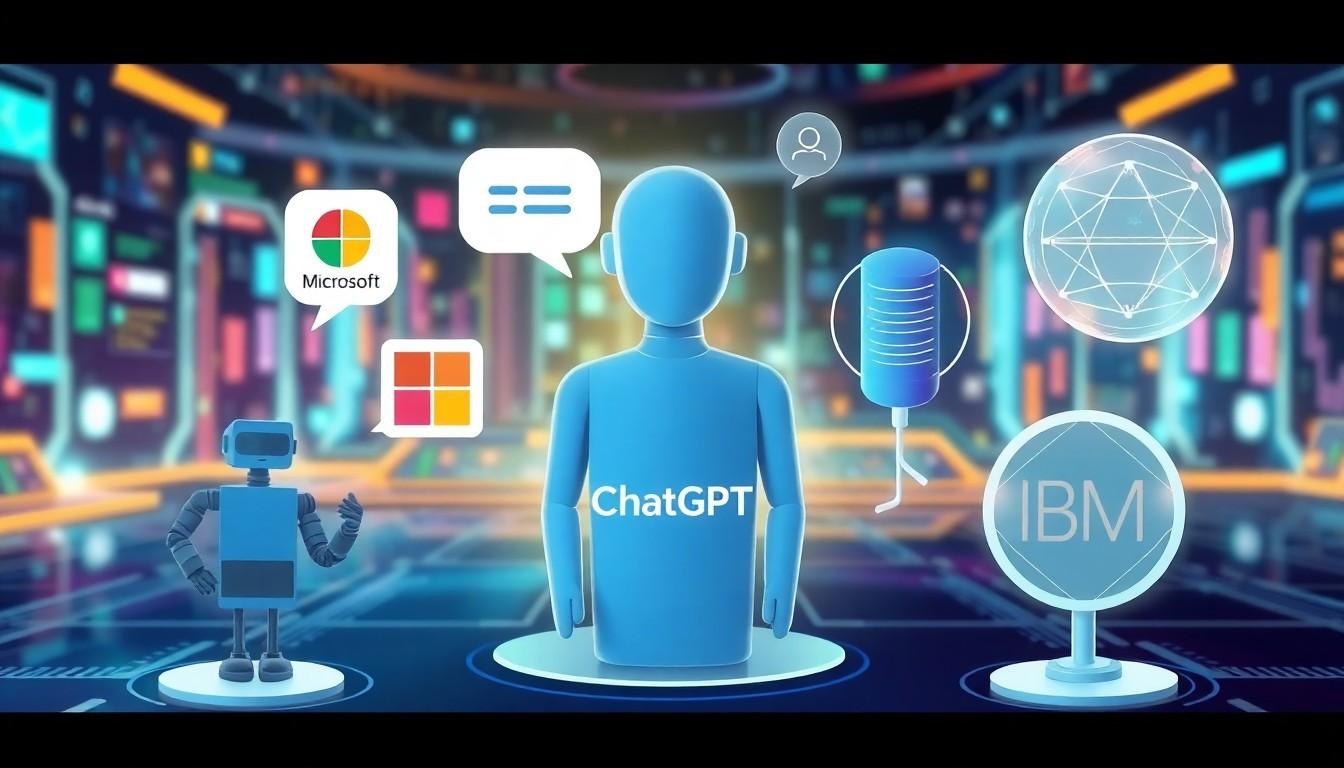Table of Contents
ToggleIn the bustling world of AI chatbots, ChatGPT has stolen the spotlight, but it’s not the only star in this digital galaxy. With a growing lineup of competitors vying for attention, it’s like the Oscars of artificial intelligence—everyone wants to take home the trophy for best conversationalist. From quirky personalities to specialized skills, these challengers are ready to step into the ring and show what they’ve got.
Curious about who’s trying to steal ChatGPT’s thunder? This article dives into the fascinating realm of AI competitors that are shaking things up. Whether it’s for customer service, creative writing, or just a good laugh, these contenders are pushing the envelope, proving that in the world of AI, there’s plenty of room for friendly rivalry. Buckle up and get ready to explore the exciting competition that’s redefining how we interact with technology.
Overview of ChatGPT
ChatGPT represents a significant advancement in AI chatbot technology. This model excels in language understanding and generation, enabling engaging conversations with users. Developed by OpenAI, it possesses a versatile knowledge base, drawing from diverse sources to provide relevant responses.
User accessibility remains a core feature of ChatGPT, allowing individuals across various sectors to leverage its capabilities. Companies utilize it for customer support, while creative professionals increasingly turn to it for brainstorming ideas. This versatility makes ChatGPT appealing across multiple industries.
Support for multiple languages enhances its usability, reaching a broader audience. Integration into applications, like messaging platforms, showcases its adaptability. Given its effectiveness, many organizations rely on ChatGPT to enhance user experience and streamline communication processes.
While competition exists, ChatGPT stands out due to its powerful natural language processing. Improvements in conversational context awareness allow for more human-like interactions. Performance metrics indicate high user satisfaction rates, reaffirming its value in the AI chatbot market.
Continual updates ensure that ChatGPT evolves with user needs, making it a reliable resource in AI-driven communication. Maintaining relevance within the competitive landscape remains a primary objective. Therefore, exploring ChatGPT’s strengths and identifying its competitors provides insight into its current position in the fast-paced world of AI technology.
Understanding ChatGPT Competitors

Numerous AI solutions compete with ChatGPT, showcasing diverse capabilities. This section highlights both established players and emerging alternatives.
Major Players in the Market
Google’s Bard introduces unique features, emphasizing contextual understanding and integration with Google’s search engine. Microsoft’s Bing Chat leverages GPT technology, enhancing user experience through real-time internet access. Amazon’s Alexa focuses on voice interaction, delivering personalized responses tailored to users’ needs. Additionally, IBM Watson stands out in enterprise applications, providing robust tools for customer service automation and data analysis. Significant advancements from these competitors drive innovation and challenge ChatGPT’s market position.
Emerging Alternatives
New innovations emerge regularly, expanding the conversational AI landscape. Claude by Anthropic offers user-friendly experiences with an emphasis on ethical AI interactions. DistilGPT, developed by Hugging Face, prioritizes efficiency, delivering responses with lower latency. Similarly, Jasper focuses specifically on marketing content generation, addressing the need for targeted communication. Each of these alternatives brings a fresh perspective, contributing to a vibrant ecosystem of AI solutions that continually shapes user preferences and business strategies.
Comparative Analysis
Competitors in the AI chatbot market each bring unique features and functionality to the table, distinguishing themselves from ChatGPT. Google’s Bard specializes in contextual understanding, enhancing the user experience with relevant information from its search engine. Microsoft’s Bing Chat integrates real-time internet access, supporting users with up-to-date responses. Amazon’s Alexa stands out for its personalized voice interactions, appealing to users seeking convenience in everyday tasks. IBM Watson offers advanced tools in customer service automation, focusing on data analysis and enterprise needs. Emerging alternatives like Claude by Anthropic focus on ethical considerations in AI development, while Hugging Face’s DistilGPT prioritizes efficiency.
Various pricing models affect accessibility across the competitive landscape. ChatGPT offers a subscription model for premium features; free access exists with limitations on usage. Google’s Bard is available at no cost, which attracts a broader user base. Microsoft’s Bing Chat is integrated into its services, so users leverage its capabilities without additional expenses. Amazon’s Alexa operates through devices with distinct price points, ensuring varied accessibility. IBM Watson provides tailored pricing for enterprises, catering to specific business needs. Emerging players typically offer competitive pricing, enhancing accessibility for smaller businesses and individual users.
Use Cases and Applications
AI chatbots serve various purposes across different sectors. Customer service utilizes these tools to address inquiries efficiently. Users often experience quick responses and personalized interactions, leading to greater satisfaction.
Content creation benefits from AI chatbots as well. Marketers leverage tools like Jasper to generate engaging marketing copy and social media posts. Writers often find inspiration through AI suggestions, streamlining the creative process.
Education also sees significant applications. ChatGPT and its competitors aid in tutoring, providing students with instant feedback and explanations on complex topics. Language learning platforms utilize AI interactions to enhance conversational skills in real-time.
Healthcare utilizes AI chatbots for patient interaction. Providers use these systems to schedule appointments and deliver medication reminders. Patients appreciate receiving timely information, improving overall engagement in their health management.
In the financial sector, chatbots assist with transactional queries. Banking institutions employ these AI systems to offer support for balance inquiries and transaction history. Improved customer experiences result from the instant availability of relevant financial information.
All the mentioned use cases highlight the versatility of AI chatbots in everyday tasks. As industries embrace these technologies, they can enhance efficiency and improve user engagement. Competitors like IBM Watson and Google’s Bard also contribute unique functionalities, ensuring a robust ecosystem that continues to evolve in response to user needs.
The competitive landscape of AI chatbots is rich and diverse. As technology advances, various players like Google’s Bard and Microsoft’s Bing Chat continue to push boundaries, each offering unique features that cater to different user needs. This vibrant ecosystem fosters innovation and ensures that users have access to a range of solutions tailored to their specific requirements.
ChatGPT remains a formidable contender thanks to its natural language processing capabilities and user-friendly design. However, the emergence of new alternatives keeps the market dynamic. As businesses and individuals increasingly rely on AI chatbots for enhanced interactions, the ongoing evolution of these technologies promises exciting developments ahead.




